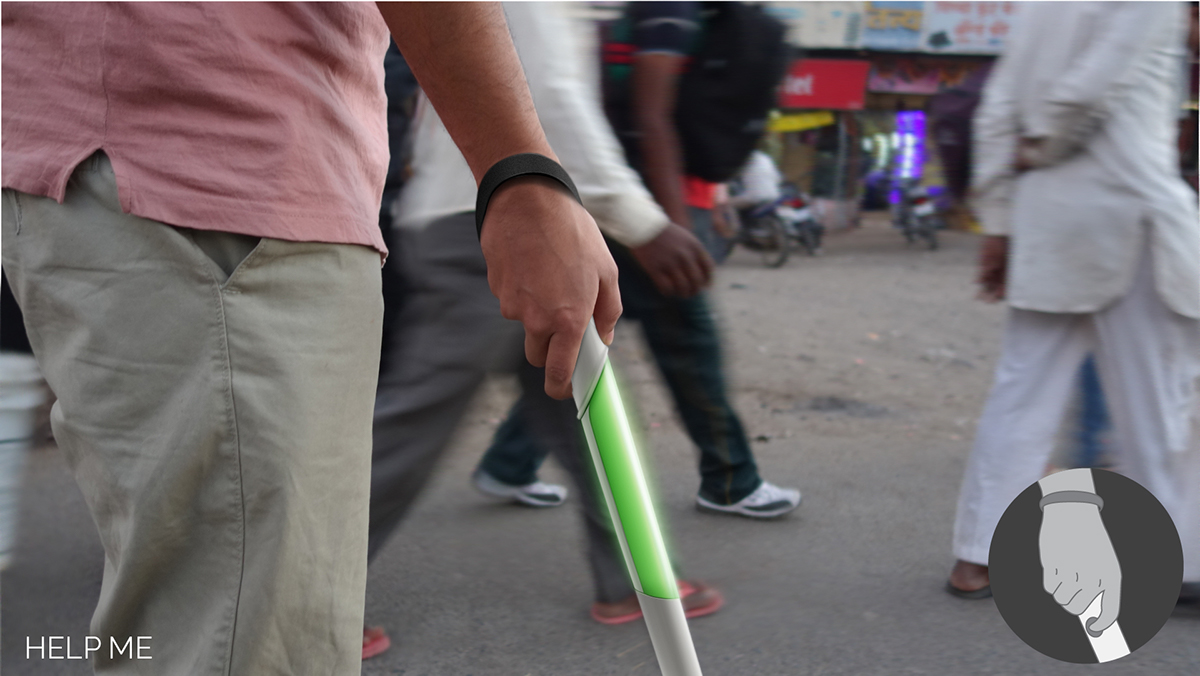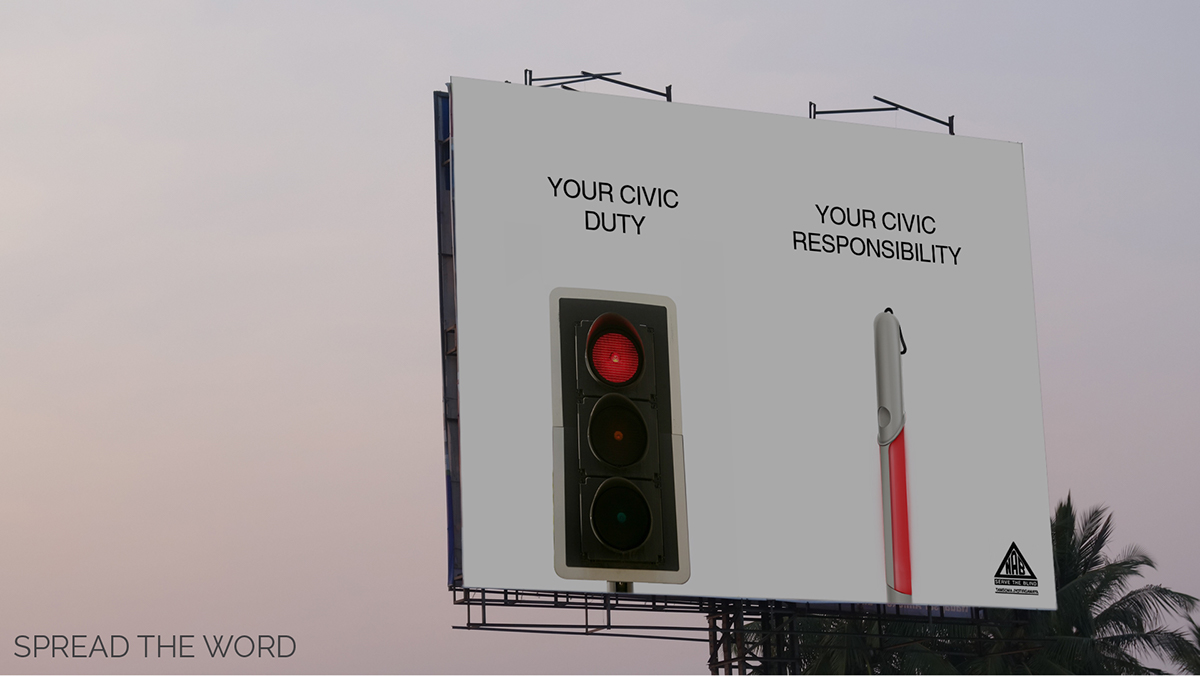"EVERYBODY IS BLIND TO MY BLINDNESS"

Although the visually impaired develop confidence and adapt efficiently to their home environment, the unknown outdoors will always be daunting.

For the sketch research, I aimed at providing a familiar first touch with this new product. Two buttons on either side of the stick, differentiated by a raised ball structure on one.

This walking stick contains two buttons ergonomically situated to coincide with the thumb and fore-finger respectively. This hand position is in tune with the posture the blind already adopt to hold their walking sticks.

The button triggered by the thumb turns on a red light, to alert traffic of the user's presence and his motives (eg: wanting to cross a street, catch a bus).
This button contains the raised ball for differenciation between the buttons.

The green light is activated by the forefinger, which informs passer-bys that the user might require some assistance. (eg: directions, time, physical help)

Since the visually imapired have a tendency to make contact between their stick and obstacles, the kinetic energy produced through this method could help charge the LEDs.

A red light makes you stop in your tracks. Similarly, the message goes out to the traffic to STOP and be aware of the user's presence.
Adversely, a green light allows traffic to move. In the human context, the green light on the stick persuades the observer to MOVE towards the user, in his aid.



